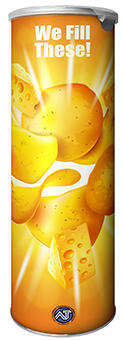
“Talk about your childhood wishes, you can even eat the dishes.” — Willie Wonka and the Chocolate Factory
Food Packaging Trends
Can you imagine going to the store, purchasing a yogurt cup, and then eating not only the contents of the cup but also the cup itself? Edible food packaging is a new innovation that is happening in the trend toward creating healthier and environmentally friendly alternatives. There is an organic food company operating out of California that is working hard to research this type of product.
Another example of alternative food packaging is edible films. The Division of Agriculture of the University of Arkansas is working on inventing and patenting several different protein-based films that are capable of serving as a carrier for organic acids capable of inhibiting the growth of three major food borne bacteria, which are E. coli, Salmonella, and Listeria moncytogense. Additionally, these packaging films can be used as a vehicle to deliver antioxidants, flavors, nutraceuticals, colors and a number other functional types of ingredients. There are a number of anticipated applications which include meats, vegetables, fruits, seafood, frozen pizza and frozen snacks, cereals, nuts and seeds and much more. This category is proving itself to be at the very cutting edge for when it comes to innovative food packaging trends in this day and age.
However, there are a number of challenges that this type of edible food packaging is liable to face. The prices associated with organic foods are tending to be higher when it comes to the supermarket channel. The problem is going to have more to do with supply and demand in this particular instance. According to a study by Arcus, organic food has grown by 20 percent over the period of the last decade. And yet, it is still being perceived as a small business, with only 3.5 percent of the food industry in Canada, or $1.8 billion dollars per year. Small changes in the way of supply and demand are capable of rocking the entire industry. For example, if a company has a 7 percent share and wants to grow to 10 percent, they will need to grow their entire supply chain by as much as 50 percent. The supply chain just does not exist the same way today.
The one thing that dissuades customers from buying organic today in most cases is the price of the food. The explosion that private label organic food is experiencing is definitely going to be a good thing. Private labels are finally entering into this market in a truly big way, allowing large scale retail chains such as Safeway as well as Whole Foods to focus on creating organic food products as a differentiator in terms of competition, allowing this category to finally reach out to people who shop based on price. Private label organic is also making organic more acceptable on a broad scale, allowing for a deeper level of society to be penetrated. Finally, organic private label will create additional supply to fuel supply and demand as farmers and suppliers begin to realize that organic food is here to stay and is not just another fad.
